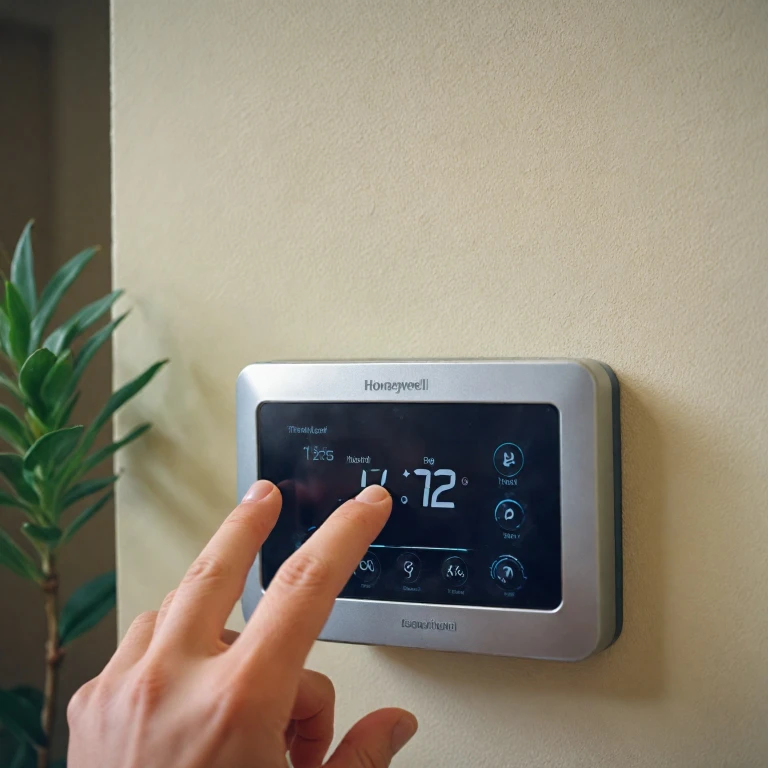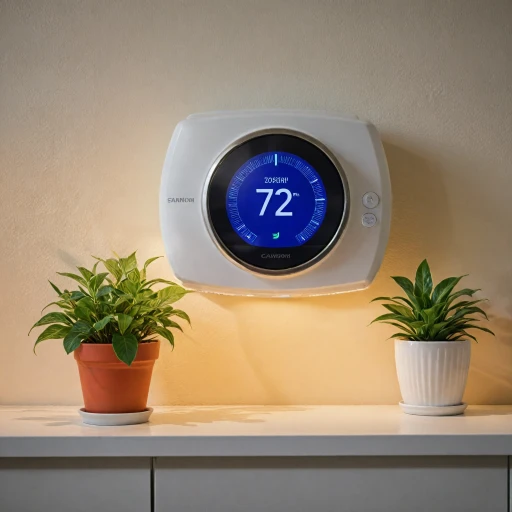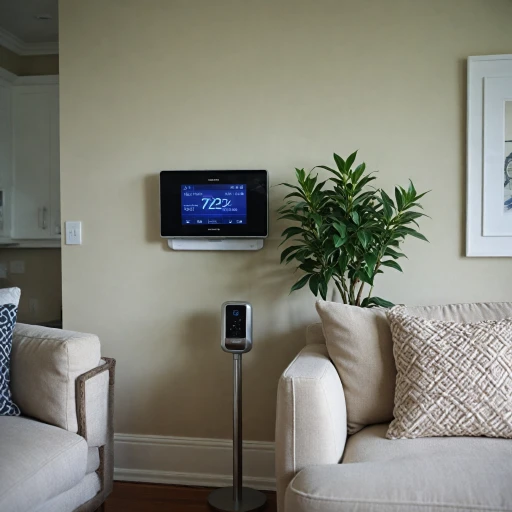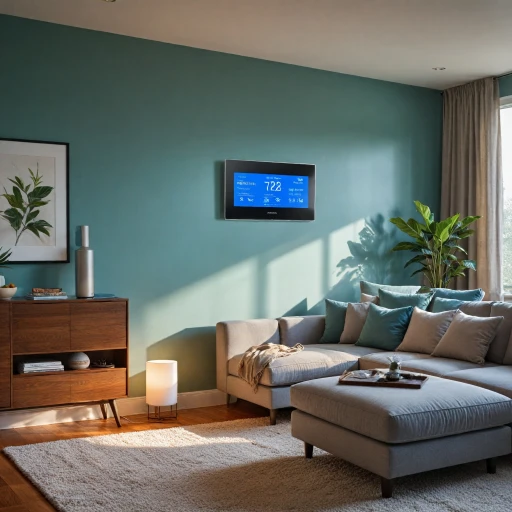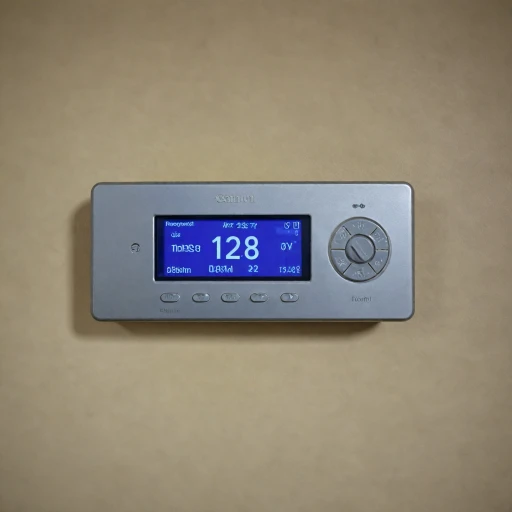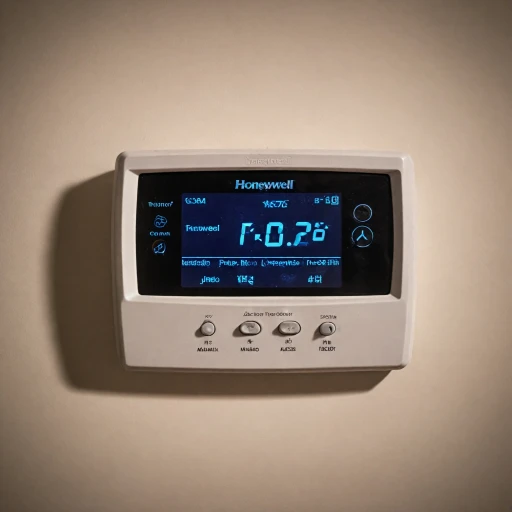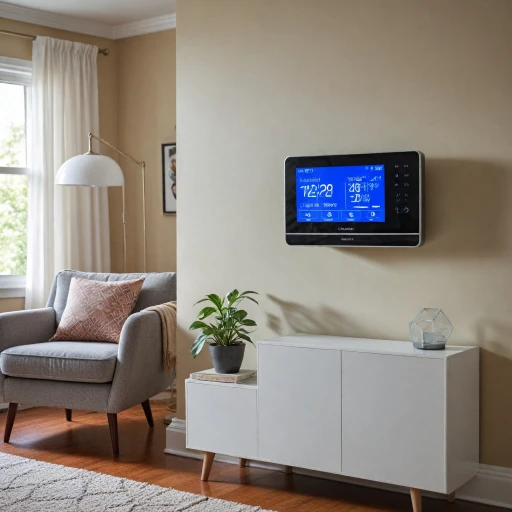
Understanding the Need for a Honeywell Thermostat Reset
Why a Thermostat Reset May Be Necessary
Understanding the need to reset can help maintain the efficiency and longevity of your Honeywell thermostat. There are various scenarios where a reset becomes essential, much like resetting other smart devices. Perhaps you've recently changed your HVAC system, and adjustments are necessary, or there might be anomalies in its heating and cooling behavior.
Another common situation involves connectivity issues with your smart WiFi. A reset might resolve difficulties in linking your thermostat to Homekit or any other smart home network. It's advisable to review how network configurations can affect device performance. For more insights on resolving these kinds of issues, you may want to explore these troubleshooting strategies.
Furthermore, incorrect schedule settings can prompt a factory reset to start with a clean setup. Whether it's pressing the menu button or navigating through the menu icon, knowing when a reset is crucial can save energy and reduce frustration. From time to time, issues like unresponsive thermostats or icon scroll lags also signal a necessary reset process.
Ultimately, recognizing when to perform a reset ensures your Honeywell device operates at its best, supporting your home's comfort and energy efficiency goals.
Identifying Your Honeywell Thermostat Model
Finding the Right Model Before You Start Your Reset
Identifying your Honeywell thermostat model is essential before you can proceed with the reset process. Each model can have specific instructions or button sequences that need to be followed accurately. Knowing your model ensures you select the correct reset method, avoiding potential issues.
To identify your Honeywell thermostat model, start by locating the model number on your device. Typically, this is found on the back of the thermostat or inside the unit's cover. If you're unsure where to look, refer to your user manual or visit the manufacturer's website.
Understanding your thermostat's model is not only crucial for resetting but also helps in maximizing energy efficiency and tackling any troubleshooting that may arise later. Different Honeywell thermostats may vary in features, such as smart capabilities, wifi options, and integration with heating and cooling systems, which can all be configured differently.
Once you have your model identified, you can proceed to step-by-step guide to resetting your Honeywell thermostat with confidence that you're following the correct instructions for your specific device.
Step-by-Step Guide to Resetting Your Honeywell Thermostat
Tackling the Reset of Your Honeywell Thermostat
Embarking on a reset process for your Honeywell thermostat can be straightforward once you break it down into manageable steps. You'll need to identify the correct procedure for your model as you initiate the reset. This will ensure you do not accidentally disrupt any settings that are crucial for your heating and cooling cycles.
Reset via Settings Menu
- Start by pressing the menu icon located on your thermostat display.
- Navigate using the available buttons to select settings and then choose the reset option.
- Select factory reset or an alternate reset type available. This step will adjust the device back to its original configurations.
Using the Button and Hold Method
- For some honeywell thermostats, a reset can be done through a simple press and hold approach.
- Locate the reset device button, usually positioned behind a small cover at the side of the thermostat.
- Firmly press and hold this button until the display flickers or a reset acknowledgment appears.
Once you’ve successfully completed these steps, your thermostat will automatically restart. Ensure your wifi connections are refreshed post-reset to facilitate system integration again.
For more detailed guidance on adjusting your models and ensuring optimal performance, you can visit optimizing your mini-split with a smart thermostat for added insights.
Troubleshooting After a Honeywell Thermostat Reset
Tackling Post-Reset Challenges
Successfully executing a Honeywell Thermostat reset is just half the journey. Once you've hit the factory reset or given a meaningful press to the menu button, you may still encounter a variety of issues that need your attention.- Reconnecting to Wi-Fi: After a reset, your thermostat might lose connection to your home Wi-Fi network. To reestablish this, press the menu icon, go into settings, and select the Wi-Fi option. Follow the prompts to re-enter your network credentials.
- Calibration of Heating and Cooling Levels: The reset procedure can affect temperature control. Ensure that your air conditioning and heating settings are correctly calibrated. This will provide your home with optimal comfort across all seasons.
- Restoring Schedules and Settings: If you've performed a factory reset, remember that all custom settings and schedules are erased. Take time to fill in the heating cooling schedules manually again, or navigate through the menu to input your preferred setup.
- Software Updates: It's also a good opportunity to check for any software updates. Honeywell smart thermostats often require updates to maintain energy efficiency and reliability.
Maximizing Energy Efficiency with Your Honeywell Thermostat
Enhancing Energy Efficiency with Smart Honeywell Thermostats
Creating a more energy-efficient home involves properly setting up your Honeywell thermostat to optimize both heating and cooling. Post-reset, this smart device can significantly contribute to the reduction of your energy bills while maintaining comfort levels.- Adjusting Energy-Saving Settings:
- Begin by accessing the *menu* of your thermostat. You'll want to select the *settings* that will allow you to switch between heating and cooling at the most efficient times.
- Press the relevant *button* to access energy-saving settings. Consider setting your thermostat to lower temperatures during the winter nights and allowing higher temperatures in the summer during work hours.
- Utilizing the Smart Schedule Feature:
- Many Honeywell thermostats offer a smart schedule feature. After performing a *reset*, you should customize this schedule to suit your daily routine.
- Use the *menu icon* to scroll through existing schedules or create new ones. This ensures your HVAC system is working efficiently when you need it most and saving energy when you don't.
- WiFi and Remote Access:
- With a smart thermostat, you can maximize efficiency with remote access. After connecting your thermostat to *wifi*, you can adjust the thermostat even when away from home.
- Make sure the *wifi settings* are active, and use a compatible app or the home automation system to control your thermostat remotely.
- Regular Maintenance and Updates:
- Regular maintenance checks and software updates are crucial. A well-maintained thermostat, free of dust and debris, ensures that sensors accurately measure air temperatures, leading to efficient heating and cooling.
- Keep an eye out for updates in the *menu* selection—these often include improvements in energy efficiency.
When to Seek Professional Help
Recognizing When Expert Assistance is Necessary
Even with a clear understanding of your Honeywell thermostat and having attempted resets and troubleshooting on your own, there may be situations that call for professional intervention. Here are some scenarios when seeking expert help is advisable:- Persistent Operational Issues: If you've tried resetting your thermostat and adjusting the settings, yet the device continues to malfunction, it may be a sign of a deeper issue within the HVAC system itself. Persistent errors when trying to adjust heating or cooling may require a professional diagnosis.
- Complex HVAC Systems: For those with intricate HVAC installations or specialized systems incorporating smart WiFi or home automation, it's possible that the reset process could interact unexpectedly with other connected devices. An expert in HVAC systems or smart home technology can ensure everything is integrated properly.
- Physical Damage: Physical signs of wear, damage, or age on your thermostat may necessitate a replacement rather than a reset. A technician can assess whether a factory reset will suffice or if a new device is required.
- Software and Firmware Issues: If your Honeywell thermostat displays unusual behavior after a firmware update or shows corrupted software symptoms, professional support can help re-install or update to the latest version safely.
